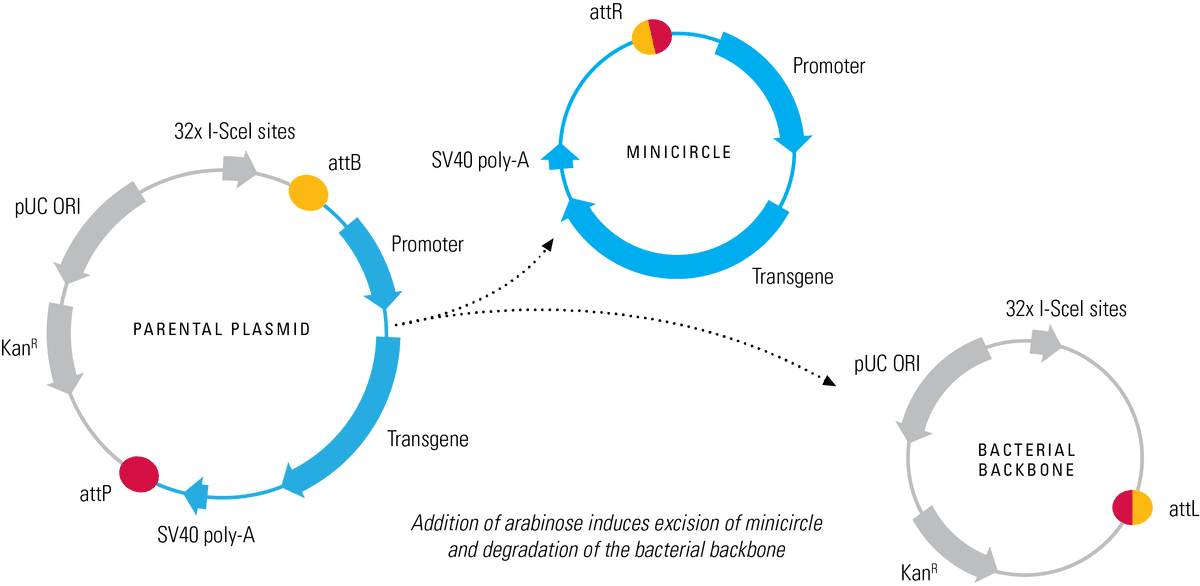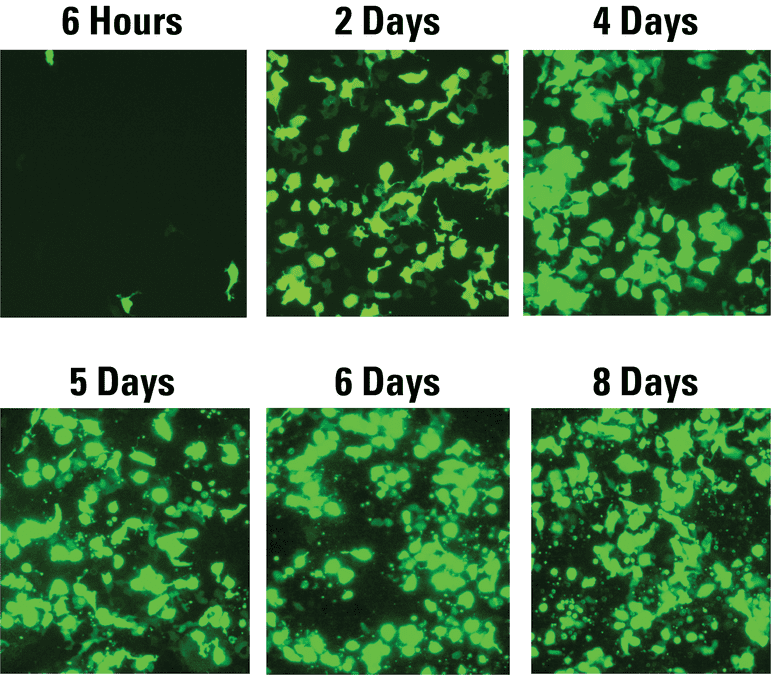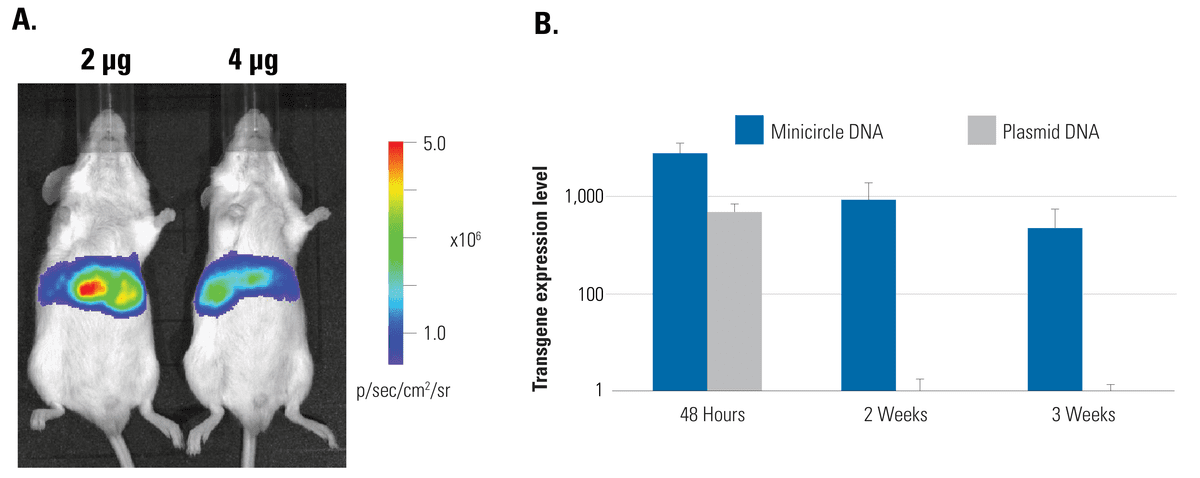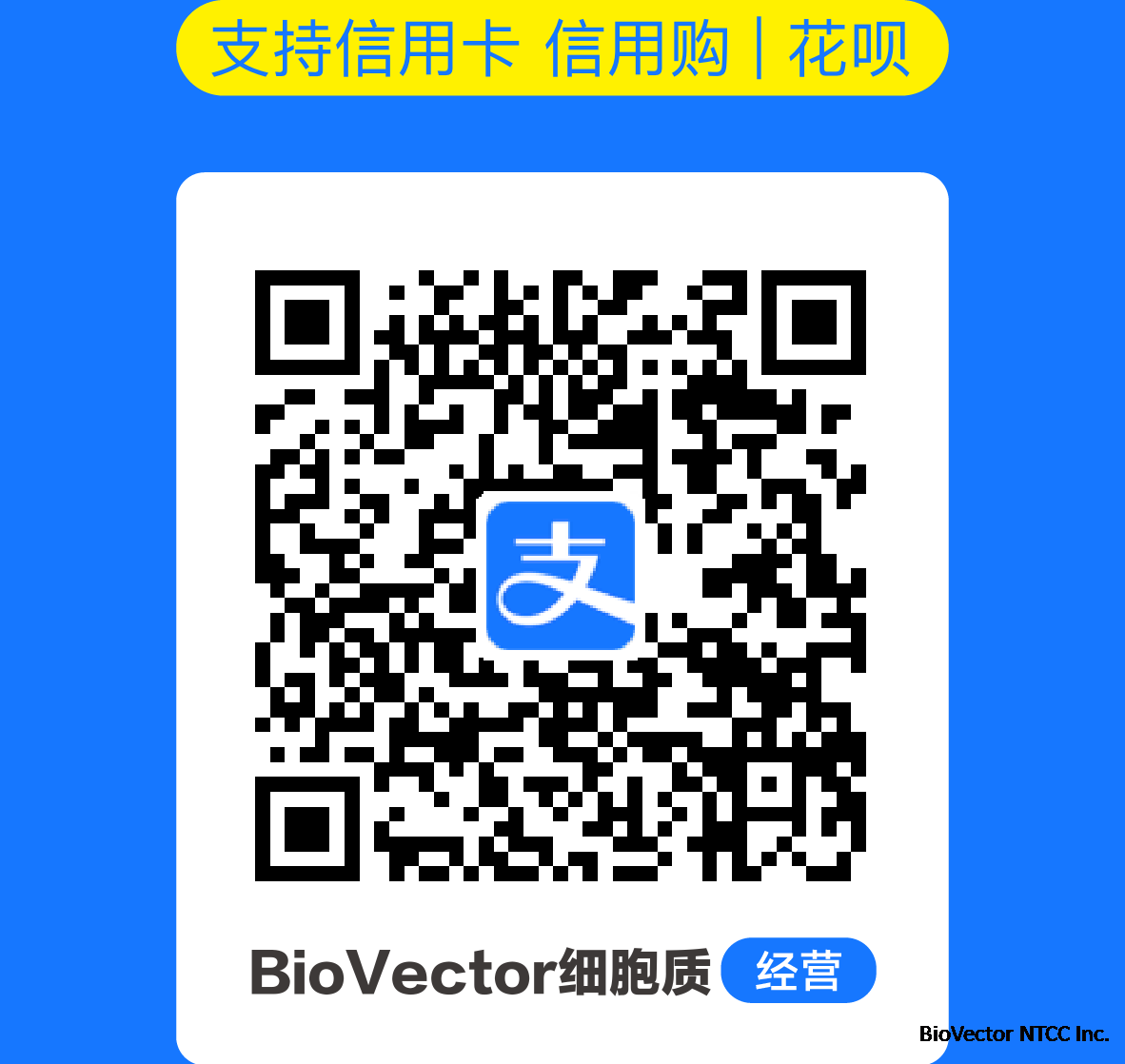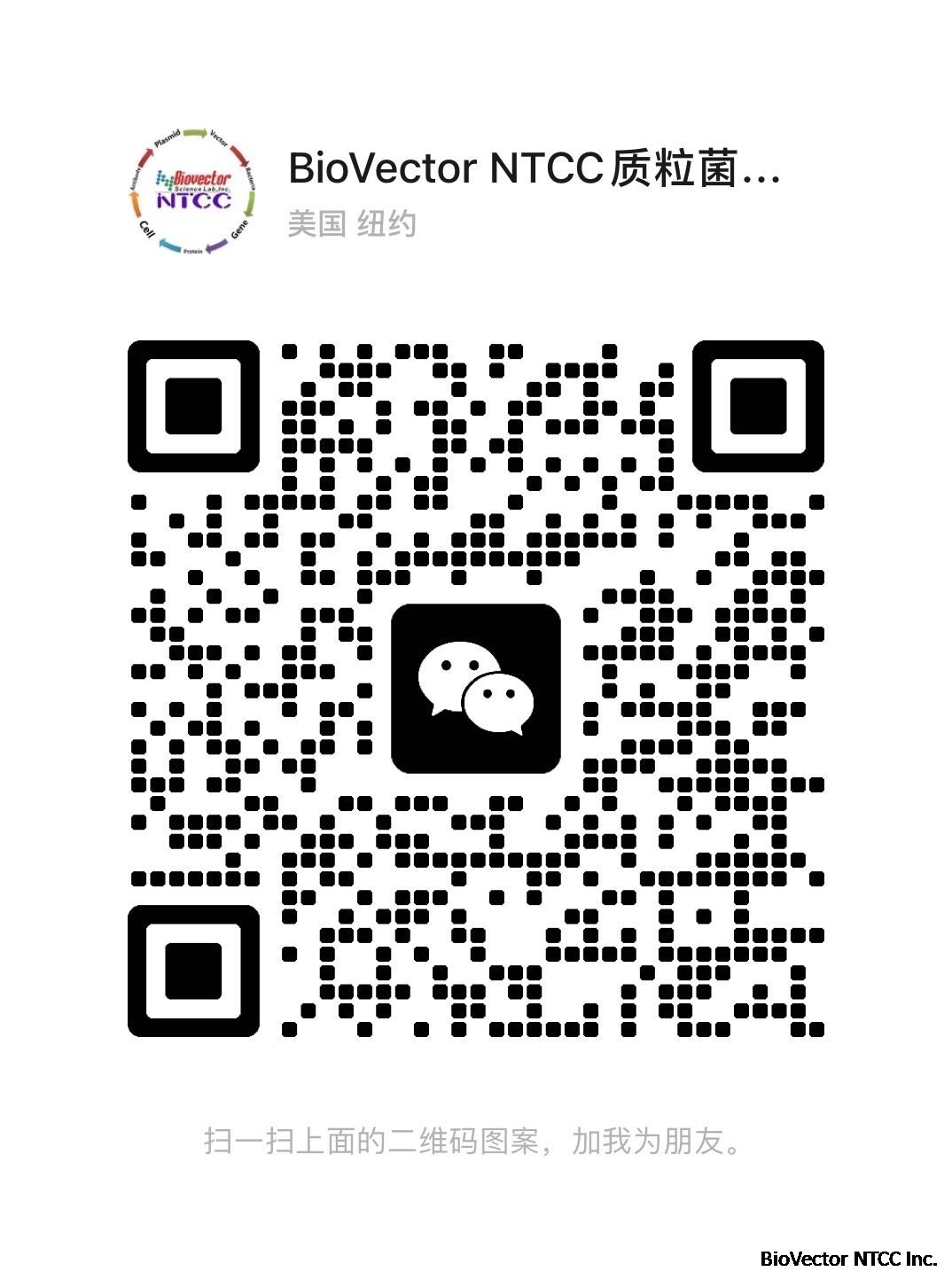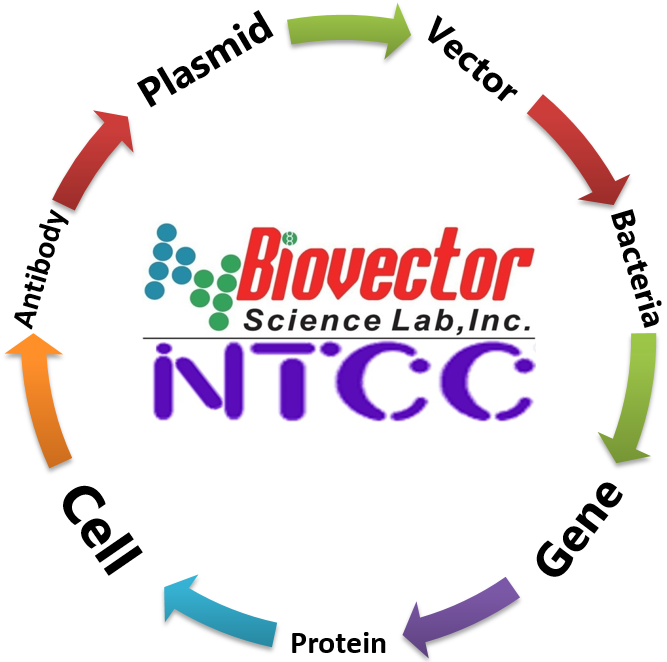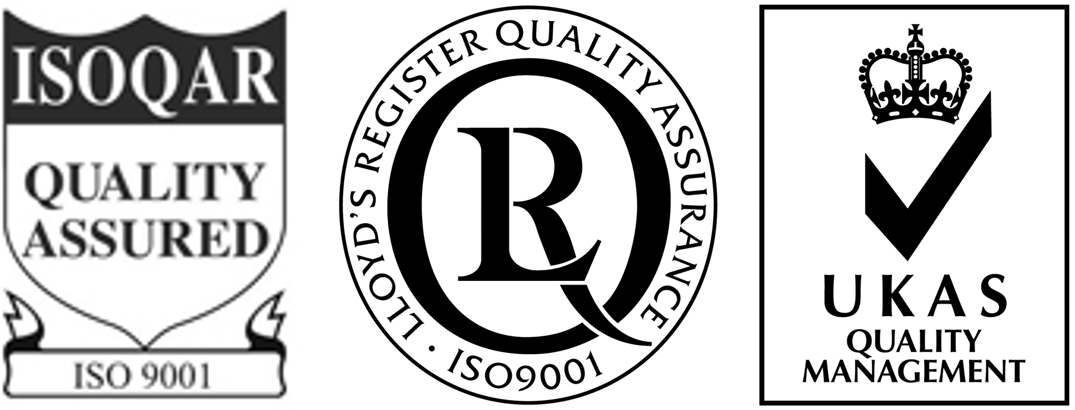pMC.EF1α-GFP-T2A-Puro-H1-MCS Parental Minicircle shRNA Cloning Vector微环shRNA表达载体质粒-BioVector NTCC Inc.
- 价 格:¥99865
- 货 号:BioVector931732
- 产 地:北京
- BioVector NTCC典型培养物保藏中心
- 联系人:Dr.Xu, Biovector NTCC Inc.
电话:400-800-2947 工作QQ:1843439339 (微信同号)
邮件:Biovector@163.com
手机:18901268599
地址:北京
- 已注册
BioVector® pMC.EF1α-GFP-T2A-Puro-H1-MCS Parental Minicircle shRNA Cloning Vector
Take advantage of minicircle technology when you deliver shRNA with this vector – drive your shRNA using the strong H1 promoter and select using GFP and puro
Episomal expression sustained over weeks
Foreign DNA-free
More efficient transfections from small plasmid size
Unlimited insert size
Optimized coli minicircle production strain
Get episomal expression of your shRNA without introducing foreign DNA to cells
Deliver shRNAs to cells with minicircles produced from the pMC.EF1α-GFP-T2A-Puro-H1-MCS Parental Minicircle shRNA Cloning Vector and get all the advantages of Minicircle Technology. With your shRNA driven by the strong H1 shRNA promoter and both GFP and puromycin resistance for selection of transfectants, you can deliver your shRNA-of-interest episomally on an efficiently-transfected plasmid that is free of foreign DNA.
The pMC.EF1α-GFP-T2A-Puro-H1-MCS Parental Minicircle shRNA Cloning Vector co-expresses the GFP and puromycin resistance selection markers via the moderate EF1α promoter.
About Minicircle Technology
Episomal expression sustained over weeks
Foreign DNA-free
More efficient transfections from small plasmid size
Unlimited insert size
Optimized coli minicircle production strain
Works in vitro and in vivo
When you want sustained transgene expression without introducing any foreign DNA—such as for model animal and gene therapy development—Minicircle Technology is a great gene expression option. Produced as small excised, circular DNA fragments from a parental plasmid, the non-viral, episomal Minicircle expression cassette is free of any bacterial plasmid DNA sequences, and comes with a variety of promoter and reporter combinations. Their small size facilitates more efficient transfection than what’s possible with standard-sized plasmids, and, while Minicircles do not replicate with the host cell, expression lasts for 14 days or longer in dividing cells, and can continue for months in non-dividing cells.
How It Works
Generating minicircles from the parental cloning vector
To generate minicircles that are ready for transfection, you need your Minicircle Cloning Vector with your insert (gene, promoter-gene cassette, small RNA, etc.), SBI’s optimized, ready-to-transform ZYCY10P3S2T E. coli Minicircle Producer Strain (Cat.# BioVector® MN900A-1), and arabinose (Cat.# BioVector®MN850A-1).
Minicircles are produced from the full-sized Parental Minicircle using PhiC31 Integrase, which mediates a recombination event between the PhiC321 attB and attP sites on the parental plasmid (Figure 1). This reaction results in two products—the minicircle, which is now free from any bacterial DNA sequences—and the parental plasmid. To get rid of the parental plasmid, the I-SceI endonuclease recognizes and acts on the I-SceI sites on the parental plasmid, resulting in degradation of the parental plasmid.
How to generate minicircles from the parental minicircle vector
Figure 1. Generating minicircle DNA from the Parental Minicircle Plasmid.
More about the BioVector® ZYCY10P3S2T E. coli Minicircle Producer Strain
The Minicircle Producer Strain harbors an arabinose-inducible system to express the PhiC31 integrase and the I-SceI endonuclease simultaneously. The ZYCY10P3S2T strain also contains a robust arabinose transporter LacY A177C gene. Adding arabinose to the media turns on expression of the PhiC31 integrase and endonuclease genes, resulting in separation of the Parental Minicircle Plasmid into the individual minicircle and parental plasmids (from the PhiC31 Integrase activity), and the degradation of the parental plasmid (from Sce-1 endonuclease activity).
Supporting Data
Achieve sustained expression from minicircles after transfection in vitro and in vivo
Figure 1. Easy, sustained transfection in most cell types. Transfection of 1 μg of minicircle DNA (pMC.CMV-MCS-EF1-GFPSV40PolyA, Cat.# BioVector®MN511A-1) into HEK293 cells delivers over one week of robust gene expression.
Figure 2. Express transgenes for weeks in animal models. (A) Hydrodynamic tail vein injection of 2 µg and 4 µg of minicircle DNA (CMV-GFP-Luc) into mice shows excellent expression after 48 hours. (B) Minicircle-delivered transgenes retain robust expression that can last for weeks compared to transgenes that are delivered using plasmid DNA, where expression is rapidly lost. In this study, 40 µg of minicircle DNA was introduced into mice via hydrodynamic tail vein injection.
- 公告/新闻
